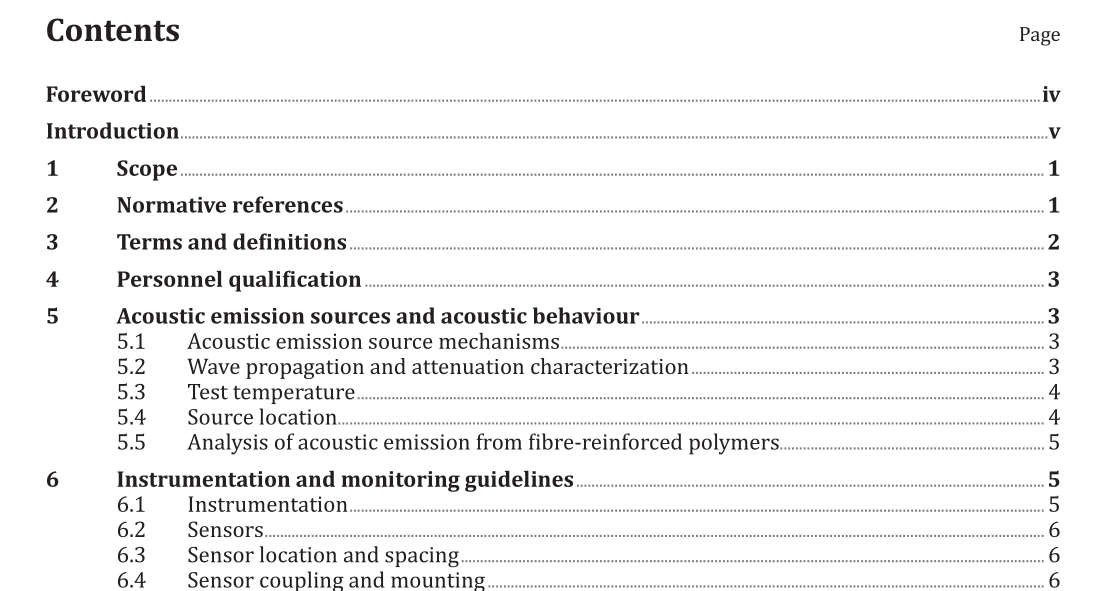ISO 18249:2015 pdf download.Non-destructive testing — Acoustic emission testing — Specific methodology and general evaluation criteria for testing of fibre-reinforced polymers
1 Scope
This International Standard describes the general principles of acoustic emission testing (AT) of materials, components, and structures made of fibre-reinforced polymers (FRP) with the aim of
— materials characterization,
— proof testing and manufacturing quality control,
— retesting and in-service testing, and
— health monitoring.
This International Standard has been designed to describe specific methodology to assess the integrity of fibre-reinforced polymers (FRP), components, or structures or to identify critical zones of high damage accumulation or damage growth under load (e.g. suitable instrumentation, typical sensor arrangements, and location procedures). It also describes available, generally applicable evaluation criteria for AT of FRP and outlines procedures for establishing such evaluation criteria in case they are lacking. This International Standard also presents formats for the presentation of acoustic emission test data that allows the application of qualitative evaluation criteria, both online during testing and by post-test analysis, and that simplify comparison of acoustic emission test results obtained from different test sites and organizations. NOTE The structural significance of the acoustic emission cannot in all cases definitely be assessed based on AT evaluation criteria only but can require further testing and assessment (e.g. with other non-destructive test methods or fracture mechanics calculations).
The resulting acoustic emission from FRP depends on many factors, such as material components, laminate lay-up, manufacturing process, discontinuities, applied load, geometry, and environmental test conditions (temperature, humidity, exposure to fluid or gaseous media, or ultraviolet radiation). Therefore, interpretation of acoustic emission under given conditions requires understanding of these factors and experience with acoustic emission from the particular material and construction under known stress conditions. Fracture of FRP produces burst type acoustic emission, high activity; however, might give the appearance of continuous emission. For certain types of construction, widely distributed AE sources from matrix or interfacial micro- failure mechanisms under given conditions commonly represent a normal behaviour. This particularly appears during the first loading of a newly manufactured FRP structure, where the composite strain for detection of first significant acoustic emission is in the range of 0,1 % to 0,3 %. High stiffness optimized composites might shift the onset of first significant acoustic emission towards comparatively high stresses due to the low matrix strain in the composite. In the case of high-strength composites, acoustic emission from first fibre breakage, apart from other sources, is normally observed at stress levels of about 40 % to 60 % of the ultimate composite strength. A normal behaviour of FRP structures is also characterized by the occurrence of different regions with alternating higher and lower AE activity, particularly at higher stress levels due to redistribution of local stress.
ISO 18249:2015 pdf download
